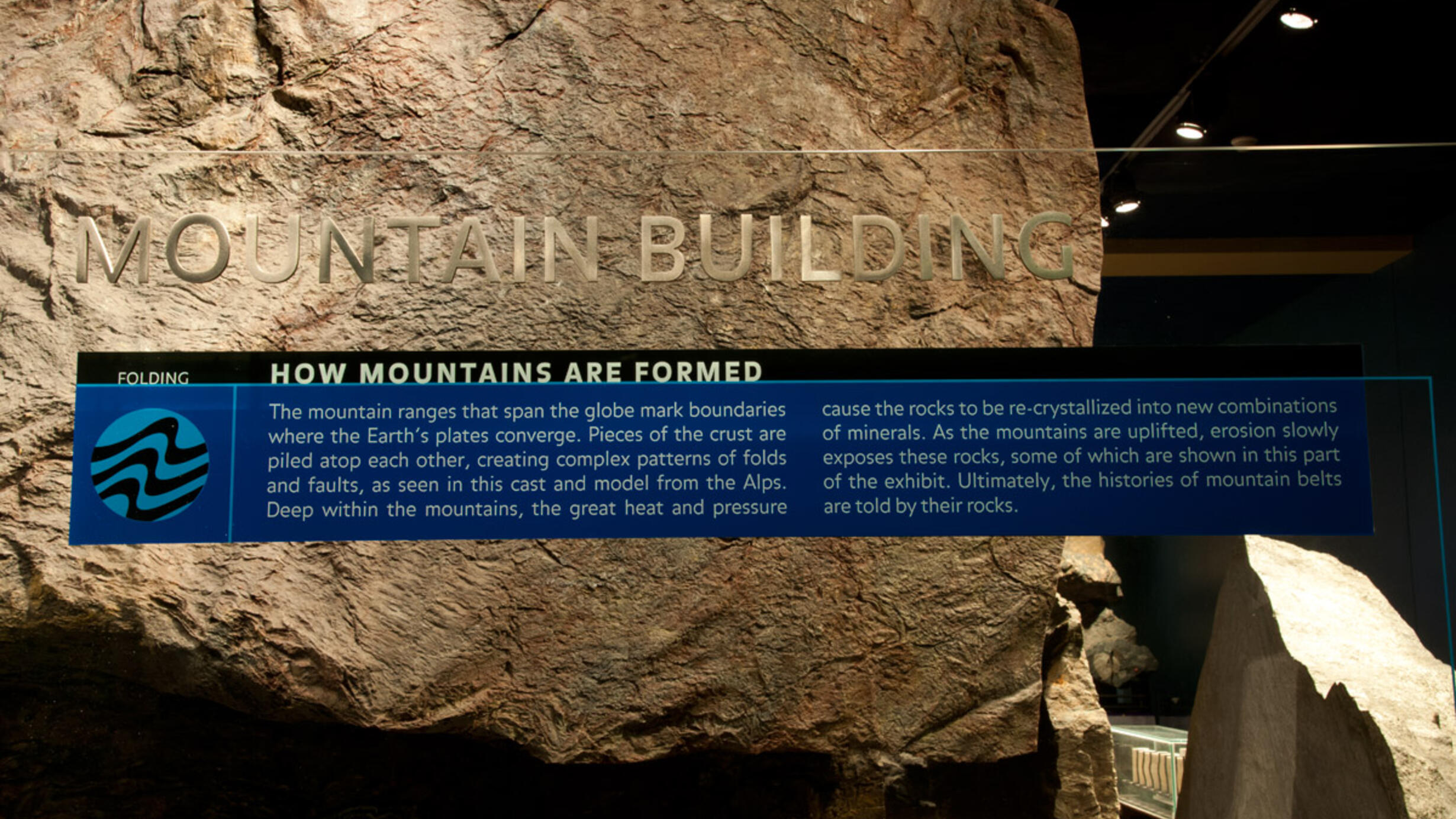Mountain building
Part of Hall of Planet Earth.
 AMNH/R.Mickens
AMNH/R.Mickens The mountain ranges that span the globe mark boundaries where the Earth’s plates converge. Pieces of the crust are piled atop each other, creating complex patterns of folds and faults, as seen in this cast and model from the Alps. Deep within the mountains, the great heat and pressure cause the rocks to be re-crystallized into new combinations of minerals. As the mountains are uplifted, erosion slowly exposes these rocks, some which are shown in this part of the exhibit. Ultimately, the histories of mountain belts are told by their rocks.
How mountains are formed
The mountain ranges that span the globe mark boundaries where the Earth’s plates converge. Pieces of the crust are piled atop each other, creating complex patterns of folds and faults, as seen in this cast and model from the Alps. Deep within the mountains, the great heat and pressure cause the rocks to be re-crystallized into new combinations of minerals. As the mountains are uplifted, erosion slowly exposes these rocks, some which are shown in this part of the exhibit. Ultimately, the histories of mountain belts are told by their rocks.
Anatomy of the Alps
The Alps, like most mountain ranges, have a core of highly deformed rock flanked by less-deformed rock.